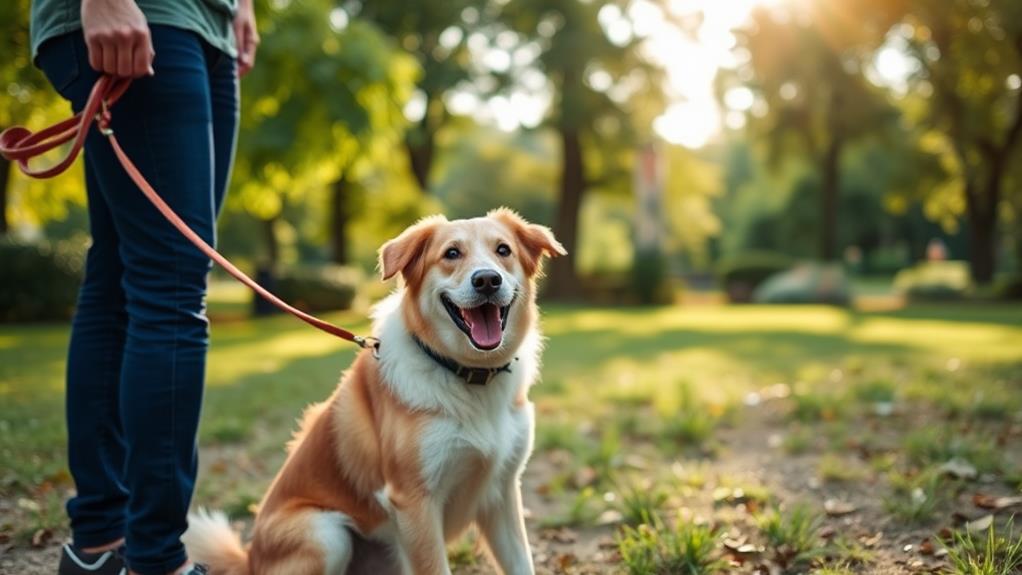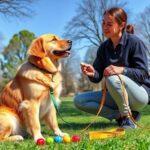Leash training your dog is essential for enjoyable walks. Start by teaching basic commands like "sit" and "stay" as foundations. Choose a sturdy, non-retractable leash and a comfortable collar or harness for better control. Always use positive reinforcement, rewarding calm behavior and responses with treats or praise. Establish a consistent walking routine that includes warm-up exercises and the same cues each time. Finally, gradually increase distractions, starting in quiet areas before moving to busier environments. Stick with these tips, and you'll make strides in your training journey while discovering even more helpful strategies along the way.
Start With Basic Commands
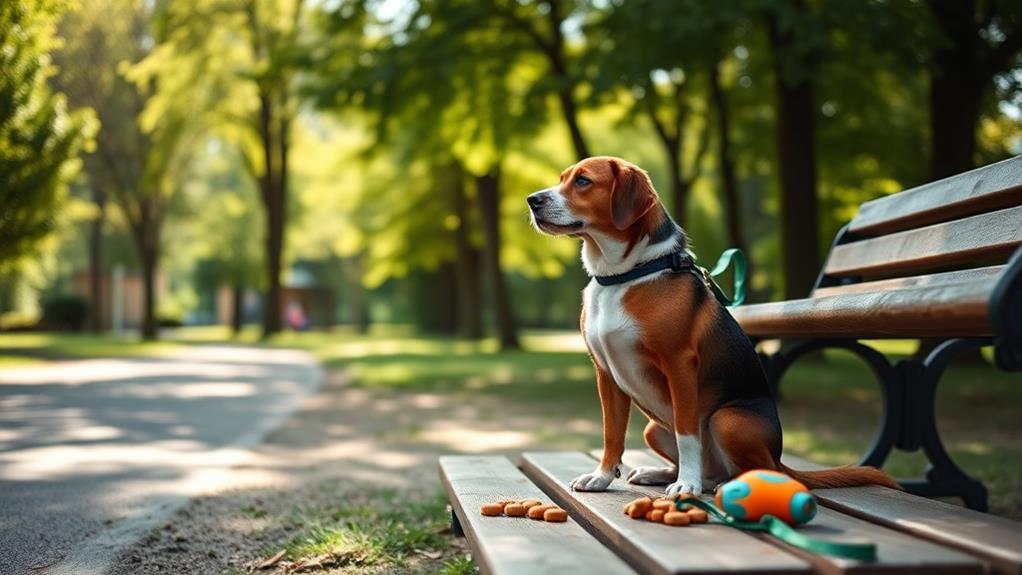
Before you hit the trails with your dog, it's essential to establish basic commands. Teaching your dog commands like "sit," "stay," and "come" lays the groundwork for a successful leash training experience. These commands not only enhance your dog's safety but also improve your overall control during walks.
Start with "sit." Use treats to encourage your dog to sit, rewarding them immediately when they comply. Repeat this until they do it consistently.
Next, move on to "stay." With your dog in a sitting position, take a few steps back. If they stay put, reward them; if they move, guide them back and try again.
Now, focus on "come." This command is paramount for keeping your dog close. Call your dog's name followed by "come" in an upbeat tone, rewarding them with praise or treats when they reach you.
Practice these commands in a distraction-free environment before introducing them in more stimulating settings. Consistency is key, so keep training sessions short and positive. By mastering these basic commands, you'll pave the way for smoother walks and a more enjoyable experience for both you and your furry friend.
Choose the Right Equipment
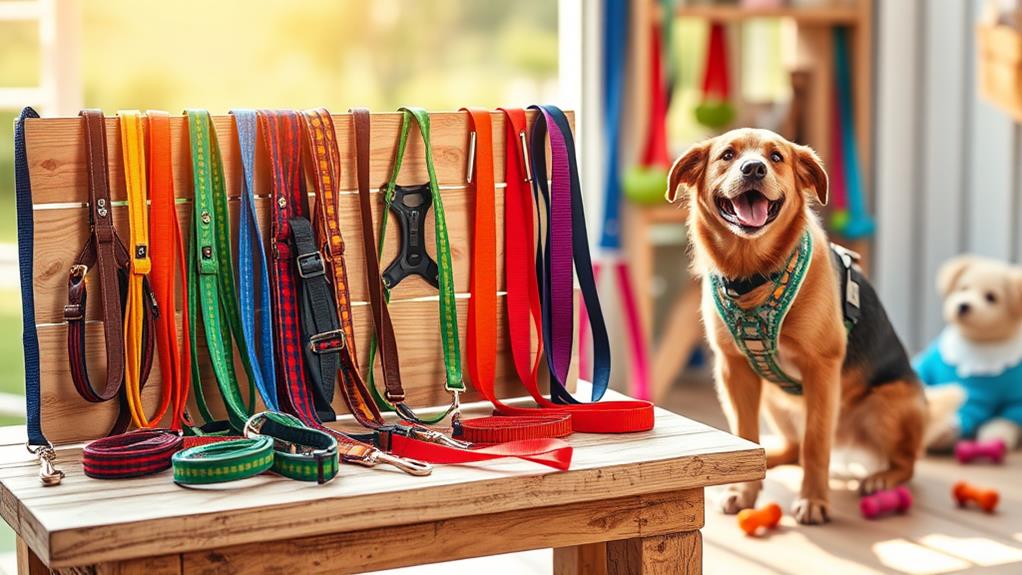
How can you ascertain your leash training sessions are effective? It all starts with choosing the right equipment. The gear you use can make a significant difference in how your dog responds to training. Here are some essential items to ponder:
| Equipment Type | Purpose |
|---|---|
| Leash | Provides control and guidance |
| Collar or Harness | Confirms comfort and safety |
| Training Treats | Rewards good behavior |
When selecting a leash, opt for a sturdy, non-retractable one that's about 4 to 6 feet long. This length gives you enough control while allowing your dog some freedom to explore. As for collars, a flat collar is usually sufficient for most dogs, but if you have a strong puller, a front-clip harness might be a better option.
Don't forget to have training treats handy for motivation. You want your dog to associate walking on a leash with positive experiences. By investing in the right equipment, you'll set the foundation for successful leash training sessions. Happy training!
Use Positive Reinforcement
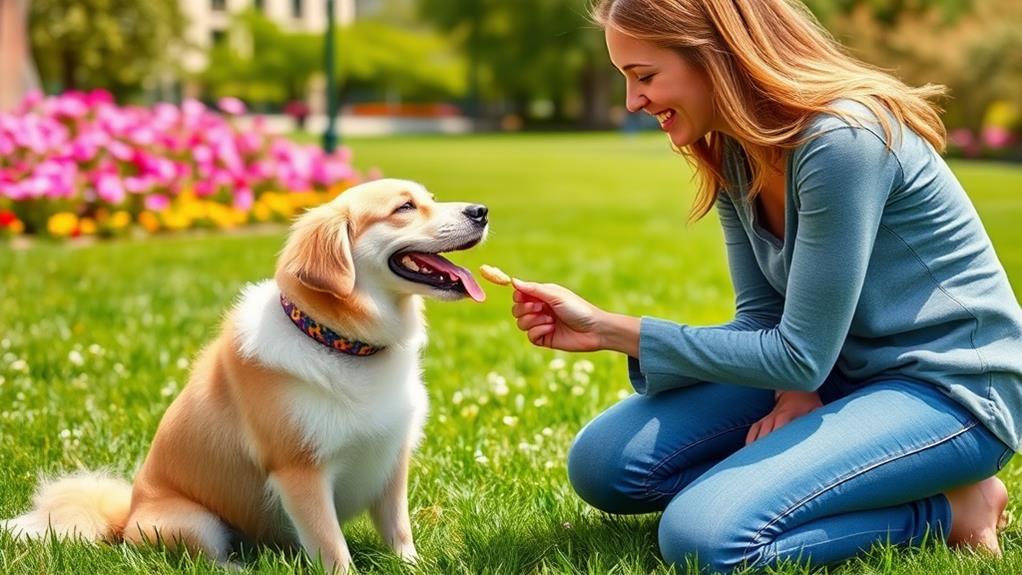
Using positive reinforcement is key to successful leash training, as it encourages your dog to repeat desired behaviors. When your dog walks calmly beside you or responds to commands, reward them immediately. This could be with treats, praise, or playtime—whatever motivates your pup the most.
Start by carrying small, high-value treats with you during training sessions. When your dog stays close, take a moment to applaud them enthusiastically. Let them know they did well; this builds a strong association between good behavior and rewards. If they pull on the leash, simply stop walking and wait for them to return to your side. Once they do, shower them with praise and a treat.
Consistency is indispensable. Make sure everyone in your household uses the same commands and rewards to avoid confusing your dog. Even small gestures, like a gentle pat or a happy tone, can reinforce their good behavior. Remember, leash training takes time and patience, but with positive reinforcement, you'll see progress. Your dog will learn that walking nicely on a leash isn't just expected, but also rewarding!
Practice Consistent Routine
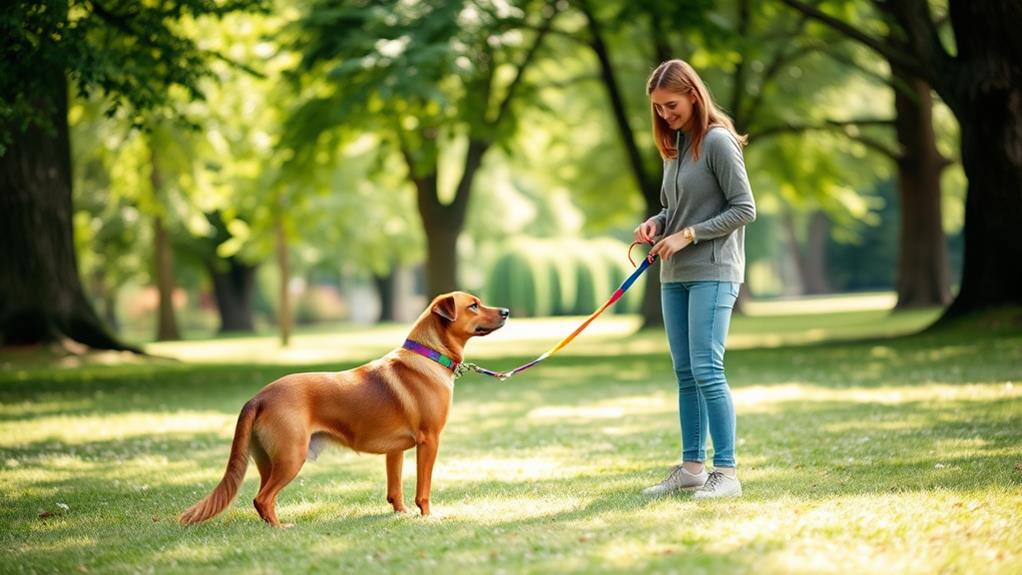
Establishing a consistent routine is essential for effective leash training. Dogs thrive on predictability, and a structured approach helps them understand what's expected. By sticking to a routine, you'll reinforce good behavior, making your training sessions more successful.
Set a Schedule: Choose specific times for walks and stick to them. Consistency helps your dog anticipate when they'll be out, reducing anxiety and excitement.
Warm-Up Exercises: Start each session with simple commands or basic obedience drills. This prepares your dog for leash training and establishes focus.
Use the Same Commands: Always use the same verbal cues and hand signals during walks. This clarity helps your dog learn more effectively.
End on a Positive Note: Conclude each session with a reward or a fun activity. Ending positively reinforces their learning and keeps them keen for future training.
Gradually Increase Distractions
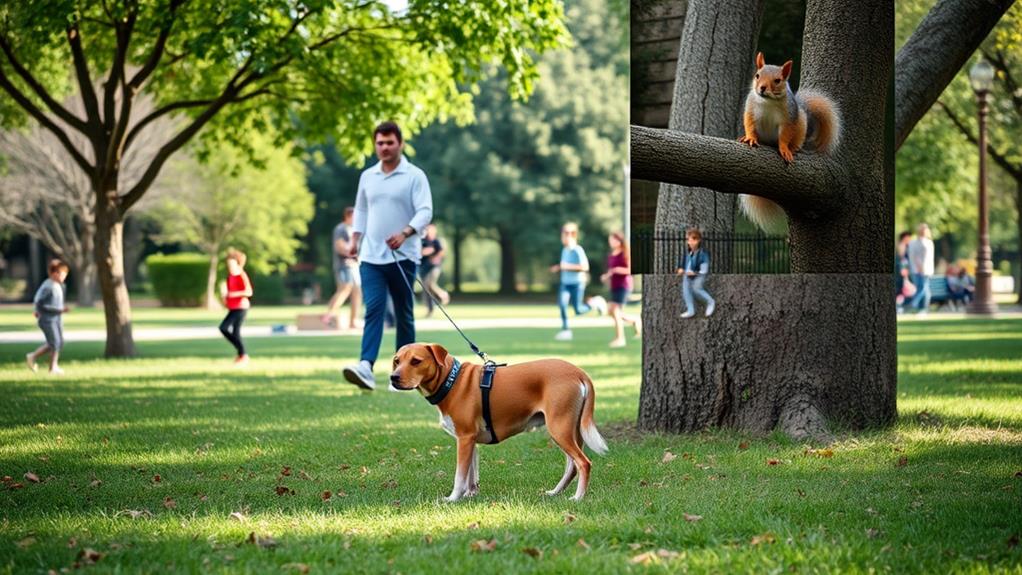
As your dog becomes more comfortable with leash training, it's time to introduce distractions gradually. This step is essential for ensuring your dog learns how to focus on you, even in a busier environment. Start with mild distractions and work your way up to more challenging ones.
Here's a simple table to help you plan your distraction training:
| Distraction Level | Suggested Environment |
|---|---|
| Low | Quiet backyard |
| Moderate | Park with few people |
| High | Busy street with traffic |
| Extreme | Dog park with many dogs |
Begin in a low distraction area, rewarding your dog for maintaining focus on you. Once your dog masters this, move to a moderate distraction environment. Keep the training sessions short and positive, and use treats or praise to reinforce good behavior.
If your dog gets overwhelmed, don't hesitate to step back to a less distracting environment. By gradually increasing distractions, you'll help your dog learn to stay focused and responsive, making walks more enjoyable for both of you. Stay patient, and celebrate each small victory along the way!
Frequently Asked Questions
How Long Does It Typically Take to Leash Train a Dog?
Leash training a dog usually takes a few weeks, but it can vary based on your dog's age, temperament, and your consistency. With patience and practice, you'll both enjoy walks together in no time.
Can I Leash Train an Older Dog Successfully?
Absolutely, you can leash train an older dog successfully! It may take patience and consistency, but many older dogs adapt well. Focus on positive reinforcement, and you'll see progress in no time. Enjoy the journey!
What Should I Do if My Dog Pulls on the Leash?
If your dog pulls on the leash, stop walking immediately. Wait for them to calm down, then reward them for loose leash walking. Consistency and patience will help teach them better walking habits over time.
Are There Specific Breeds That Are Harder to Leash Train?
Yes, certain breeds, like hounds and terriers, tend to be more challenging to leash train due to their strong instincts and energy levels. You'll need patience and consistent training methods to help them learn effectively.
Is It Necessary to Leash Train My Dog if They're Well-Behaved?
Even the world's most well-behaved dog can turn into a wild tornado without leash training! It's essential for safety, control, and preventing unexpected surprises during walks, ensuring both you and your dog enjoy the experience.
Conclusion
With patience and dedication, you'll transform those chaotic walks into enjoyable adventures. Picture your dog trotting beside you, leash loose, tail wagging, as you explore the world together. But remember, every moment counts; one slip could set you back. Will you stick to your training plan and watch your bond grow, or let frustration win? The choice is yours. Embrace the journey, and soon, you'll both be ready for whatever awaits just around the corner.

